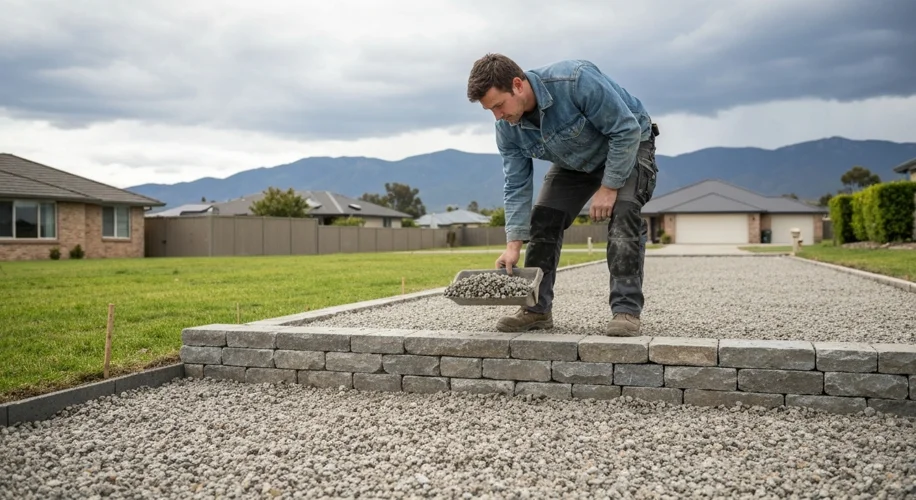The Hidden Downsides of Cutting Corners on Your Gravel Driveway
We all love a good deal, right? Especially when it comes to tackling home projects. A gravel driveway can seem like the most budget-friendly option out there. But I’ve learned over the years, especially living here in the Midwest where we get a bit of everything weather-wise, that ‘cheap’ can sometimes cost you more in the long run. Let’s talk about what happens when you try to do a gravel driveway on the super-saver plan.
It Starts with Preparation (Or Lack Thereof)
The biggest mistake people make is skimping on the base. A good driveway isn’t just a layer of gravel dumped on dirt. You need a solid foundation. This usually means excavating the area, putting down a layer of larger, crushed stone (like #3 or #4 stone) for a strong base, and then compacting it. Over this, you add a layer of smaller gravel (like #57 stone) for the driving surface.
If you skip the excavation and the proper base layers, what happens? Well, rain and snowmelt can’t drain properly. Water sits, softens the soil underneath, and before you know it, you have potholes forming much faster than they should. In areas with freeze-thaw cycles, like ours, water gets into the subsoil, freezes, expands, and then thaws, creating cracks and unevenness. A poorly prepared base accelerates this process dramatically.
Material Matters: Not All Gravel is Created Equal
Another area where people try to save is on the type of gravel. You might think any old gravel will do, but it really doesn’t. The best gravel for driveways has angular edges. This angularity allows the stones to lock together, creating a stable, interlocking surface. Smooth, rounded river stones might look pretty, but they’ll just roll around and won’t provide a firm base.
Using the wrong kind of gravel means more loose stones, more tracking into the house, and a surface that is constantly shifting. You’ll find yourself having to rake it out and add more gravel much more frequently than if you had used the right material from the start.
The Longevity Factor: Facing Down the Elements
In tougher climates, like high altitudes or places with extreme temperature swings, these issues are amplified. Freeze-thaw cycles are brutal. Without proper drainage and a well-compacted base, your driveway will show wear and tear much faster. You might end up topping it off year after year, which quickly adds up and becomes more expensive than doing it right the first time.
And let’s not forget about weed control. A proper installation often includes a layer of geotextile fabric beneath the gravel. This fabric allows water to pass through but prevents weeds from growing up from the soil below. Skip this, and you’ll be spending a lot of time pulling weeds or applying herbicides.
So, What’s the ‘Consequence’?
Ultimately, the ‘consequences’ of a cheap gravel driveway are:
- More frequent maintenance: You’ll be adding gravel, filling potholes, and raking more often.
- Shorter lifespan: It simply won’t last as long as a properly constructed one.
- Increased costs over time: The constant upkeep can end up costing more than the initial investment in a better build.
- Frustration: Dealing with a consistently deteriorating driveway isn’t fun.
While a DIY gravel driveway can be a rewarding project, it’s worth investing in proper preparation and materials. A little extra effort upfront can save you a lot of headaches and money down the road. Think of it like building a strong foundation for your garden – it’s the key to long-term success!

